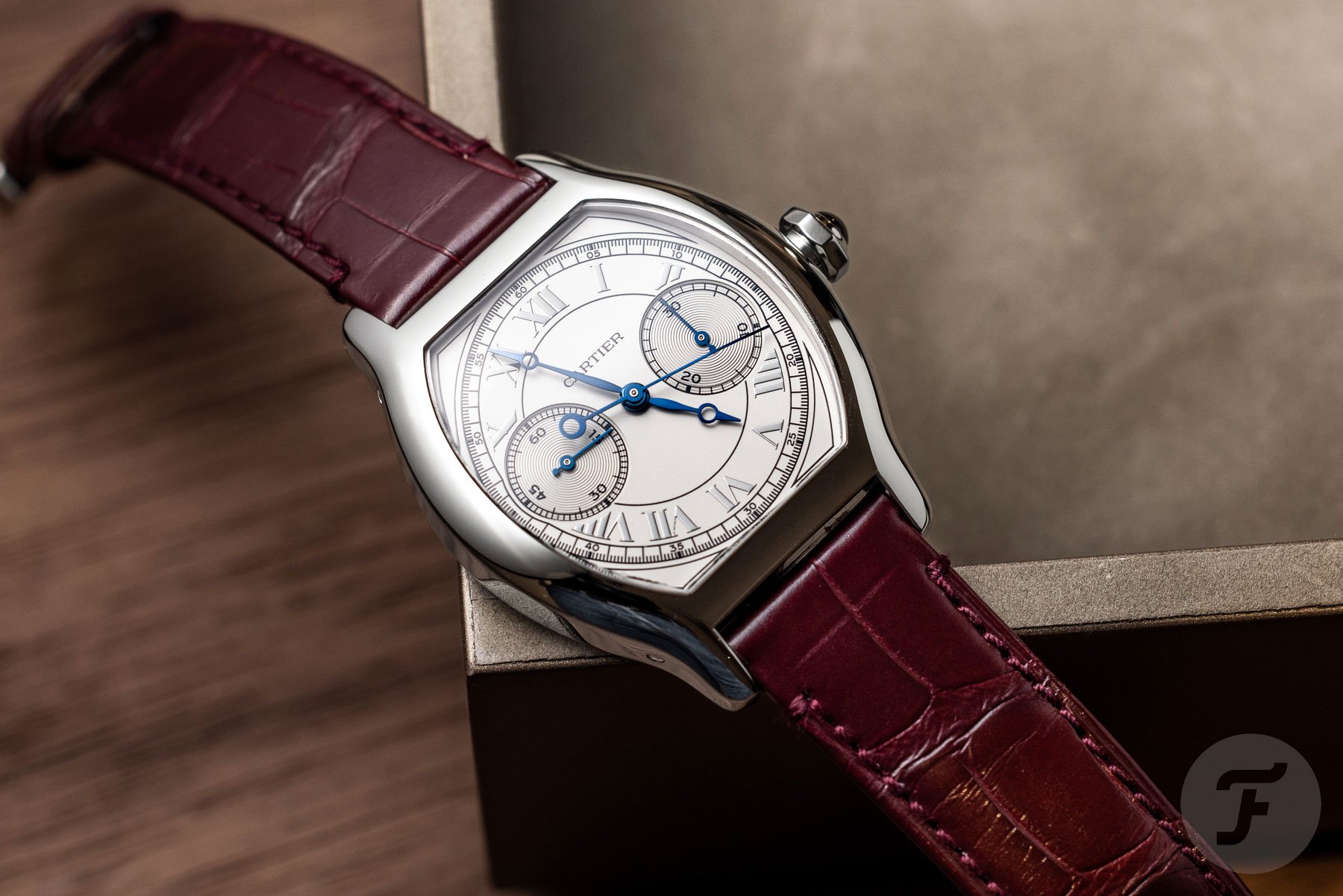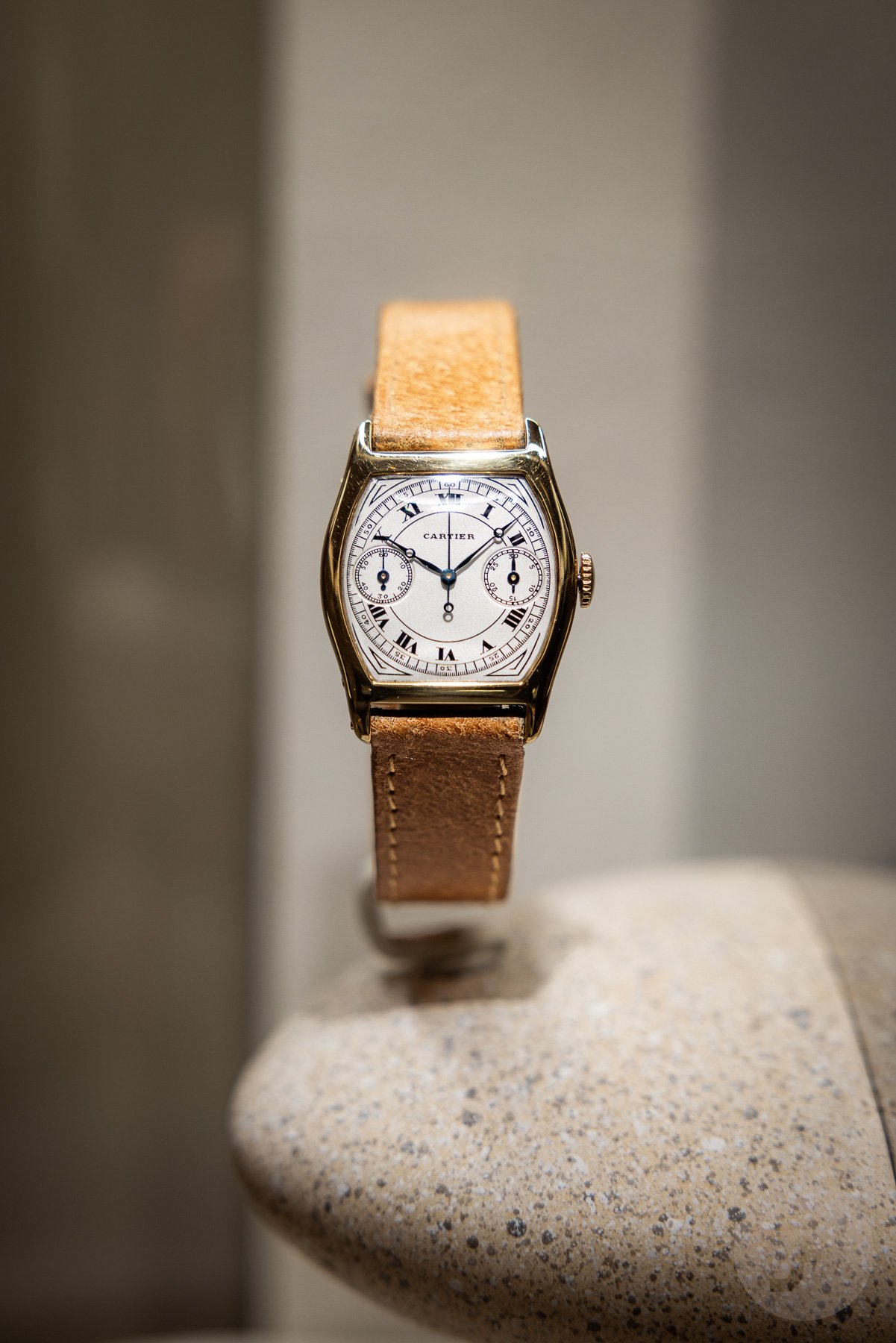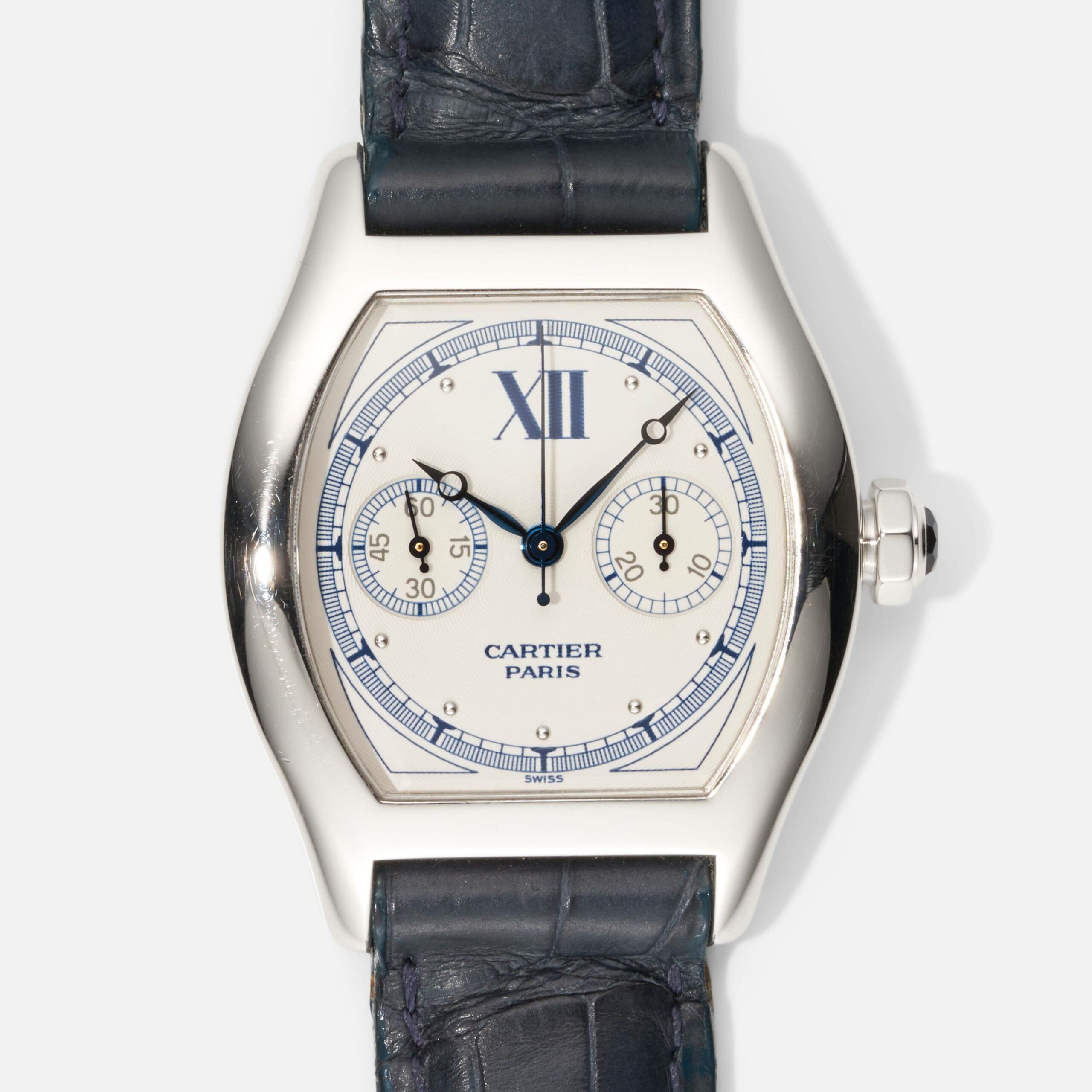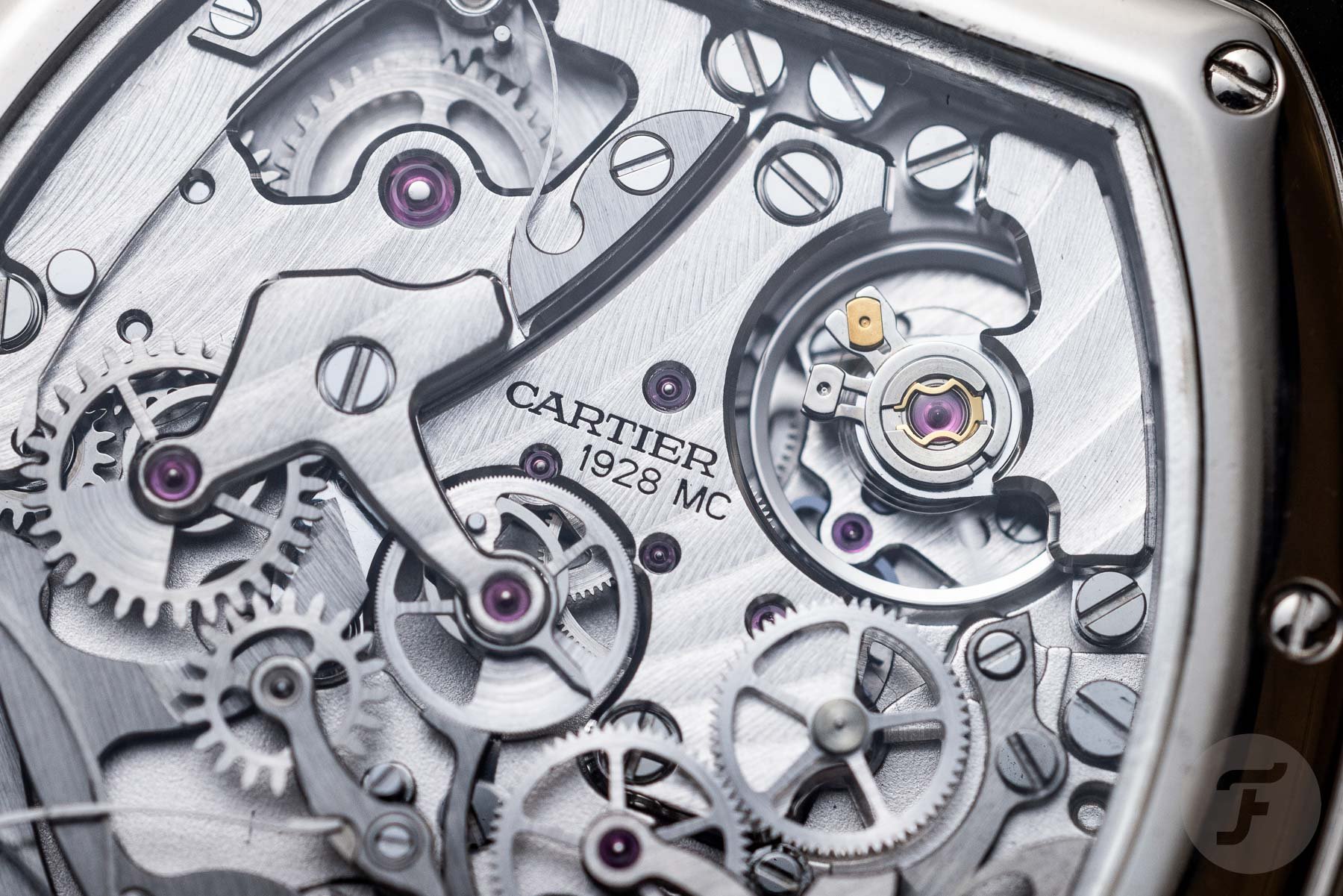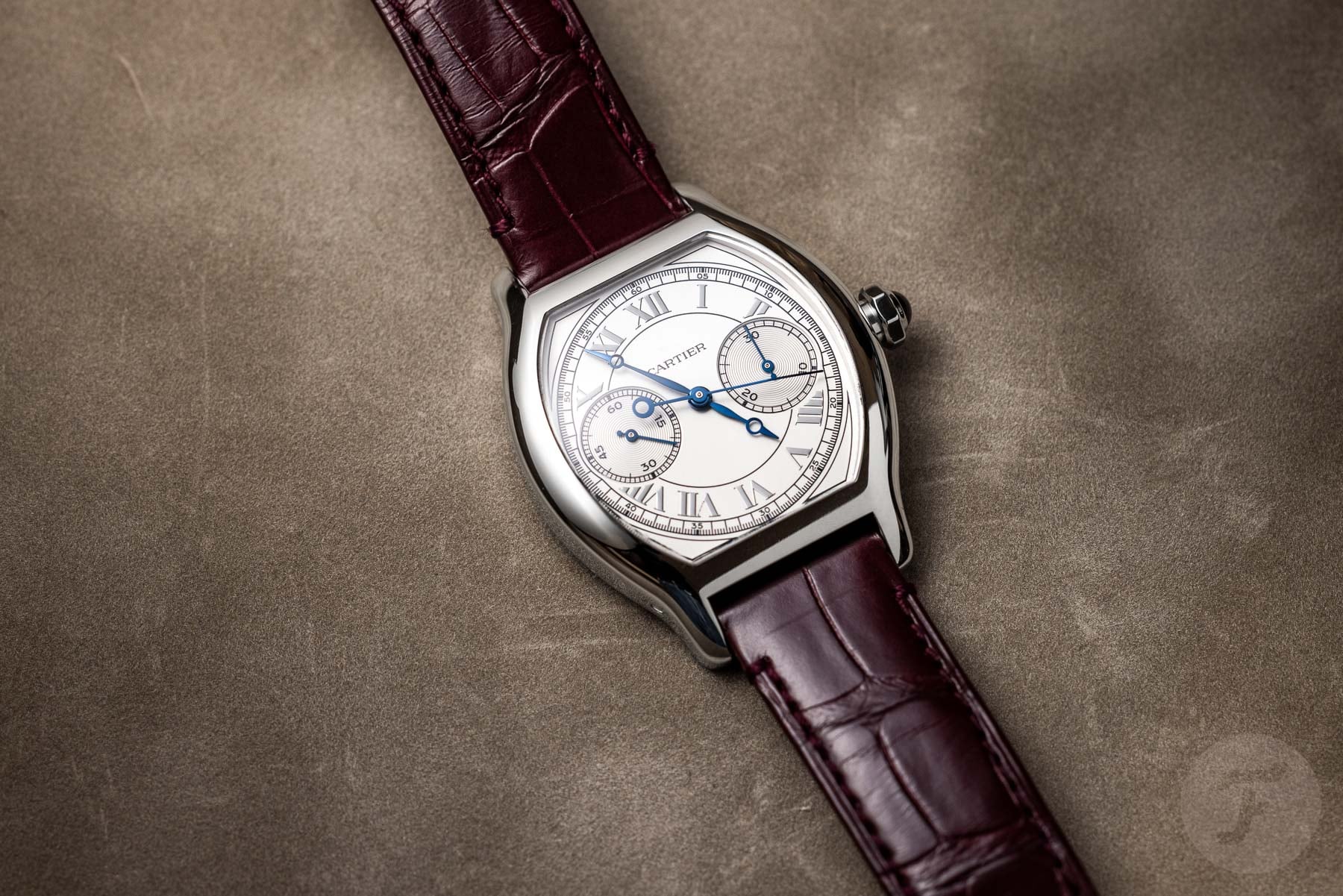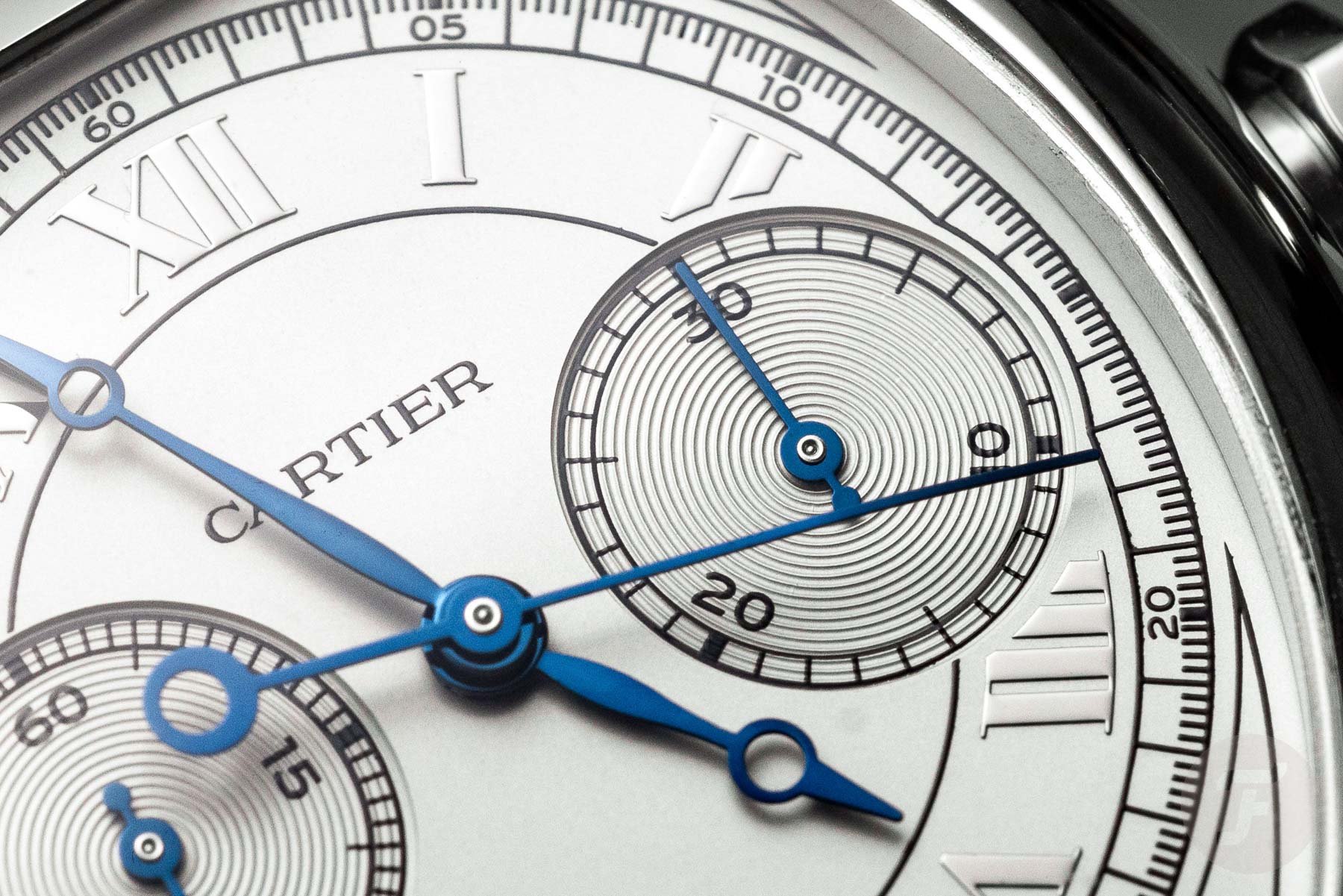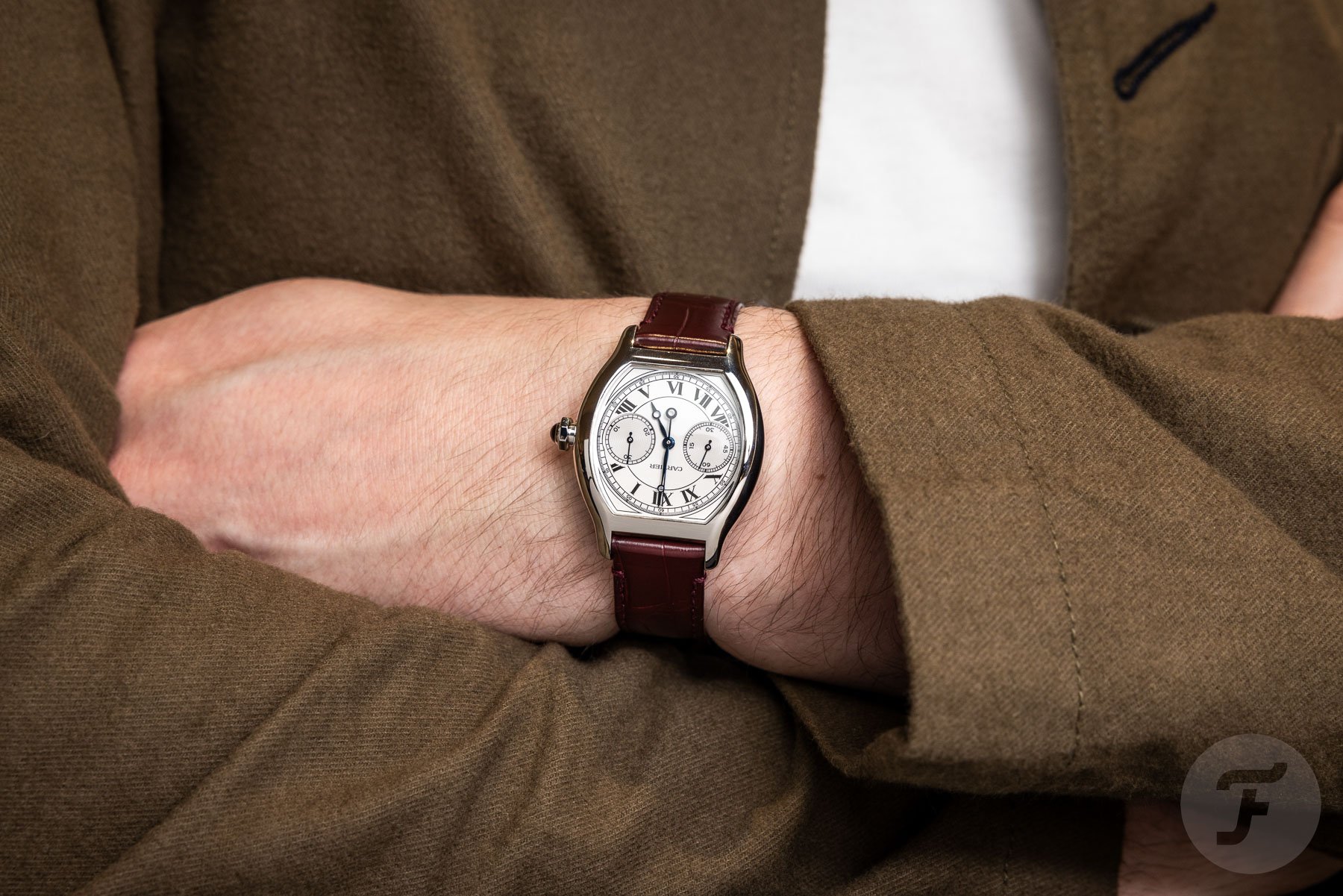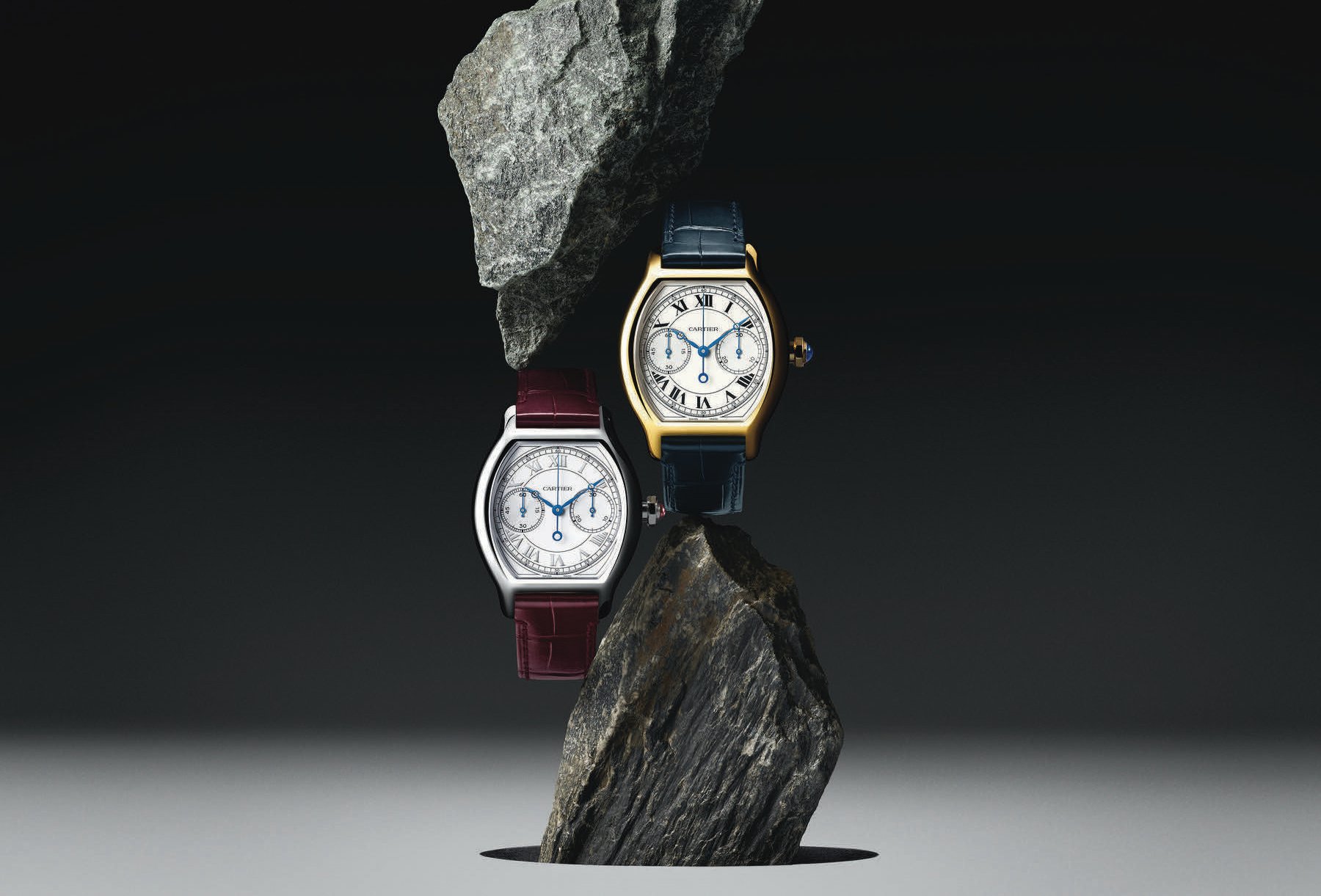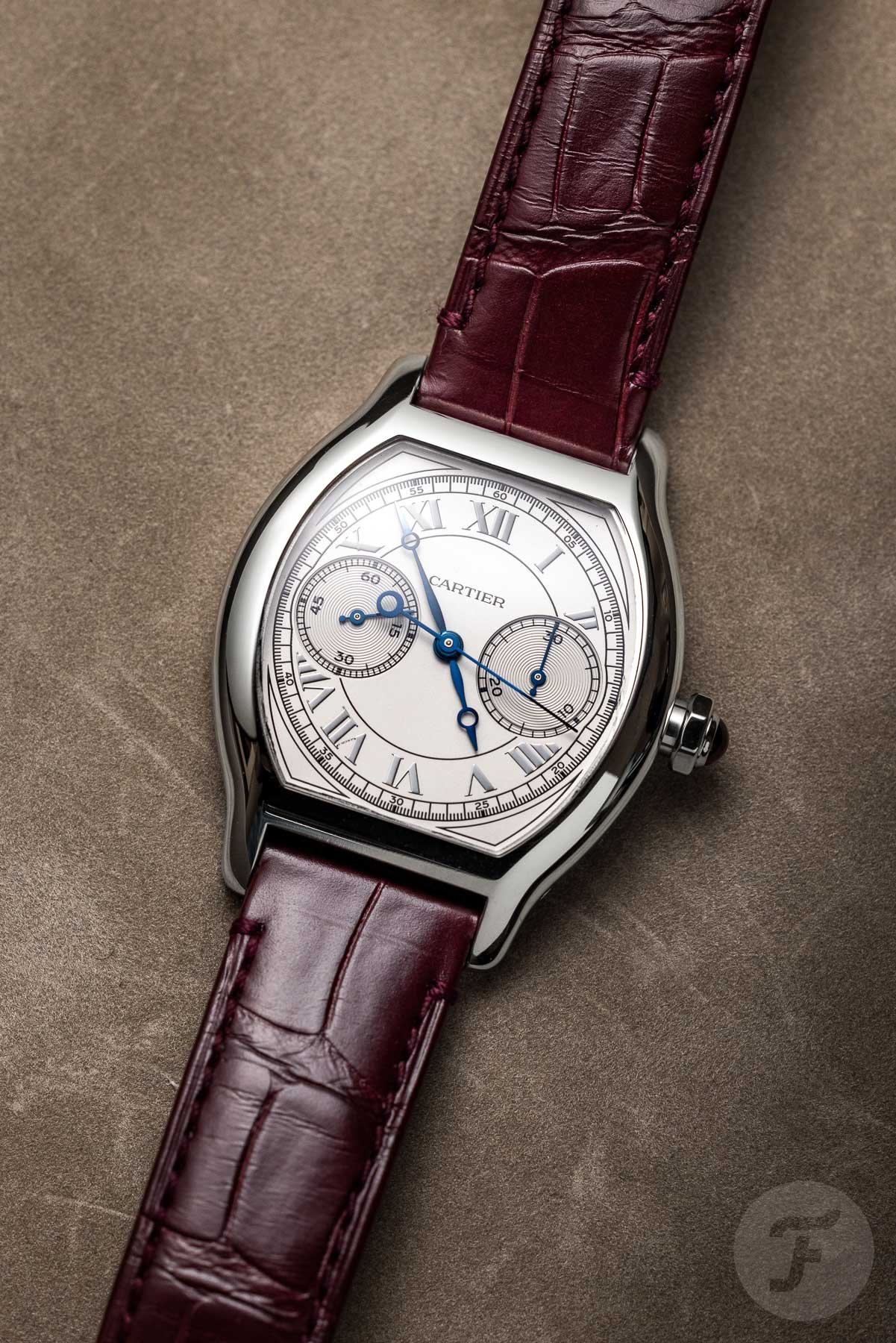Hands-On With The Impressive Cartier Tortue Monopoussoir Chronograph
It is no secret that I was impressed by a specific model in Cartier’s Watches and Wonders 2024 drop. After all, I wrote the introduction article and featured it in my W&W favorites article. In case you missed both, I am talking about the Cartier Tortue Monopoussoir Chronograph. I have had a chance to go hands-on with it, and it did not disappoint. So let’s take a moment to dive a little bit deeper into this complicated Cartier.
The Cartier Tortue Monopoussoir Chronograph comes in your choice of platinum or yellow gold. Both are limited to a mere 200 pieces. The platinum model has a price of €53,000, while the yellow gold version costs €46,000. So to say this review is practical consumer advice would miss the mark. Still, one can admire these watches from a distance, like a favorite painting. It is what I’ll be doing after having spent some time with them in Geneva.
Cartier Tortue 101
While most might associate Cartier watches with the iconic Tank, the Tortue predates it by five years. It was the second case shape from the Maison, following the Santos-Dumont. It wasn’t until 1928, however, that it became a platform for complications. In one year, Cartier introduced both a minute repeater and a monopusher (monopoussoir in French) chronograph.
The original Monopoussoir measured a mere 25mm × 35mm and looked quite different from modern versions. The bezel was much narrower, and the crown was wide and flat. The caliber inside was built by the European Watch & Clock Company, a joint venture between Edmond Jaeger and Cartier. These original Tortue Monopoussoirs are exceedingly rare. Even among the very few that are known to exist, variations occur in the dial layout.
The Tortue Monopoussoir Chronograph made a comeback during the Collection Privée Cartier Paris era (1998–2008), this time featuring a caliber by THA, a cooperation of Vianney Halter, Fançois-Paul Journe, and Denis Flageollet. The Tortue got a new 34mm × 43mm case and a round sapphire window in the case back. Several dial variations exist, some with the original round minute track, others with the tonneau dial filled out with Roman numerals. There have not been any Cartier Tortue Monopoussoir Chronograph models since then. Until now, that is.
The new Cartier Tortue Monopoussoir Chronograph
It seems Cartier has no intention of turning this rare beast into something widely available. The new Tortue Monopoussoir is limited to just 400 pieces across the two versions. The tortoise will remain an endangered species within the Cartier universe.
The new version resembles the CPCP-era models quite closely. The size remains pretty much the same at 43.7mm long, 34.8mm wide, and 10.2mm thick. The dial layout, however, seems to pay homage to the 1928 original a little more closely. There are CPCP models with a similar layout, but most are a little more intricate. They feature more numerals on the sub-dials, for instance. The new models look cleaner and more classical. The decorative triangles in the corners also make a comeback, filling out the dials. The dial surface is now opaline (very finely frosted) rather than white or guilloché.
The biggest change took place on the inside, where we now find the new caliber 1928 MC. You will immediately notice this movement is now shaped to fill out the Tortue case. The round sapphire display is replaced by a barrel-shaped window. Technically, the caliber no longer features the THA-signature oscillating pinion system for engaging the chronograph. We now see a more traditional version of the column-wheel layout. The hand-wound caliber ticks away at a 4Hz frequency and requires a rewind roughly every 44 hours. It is beautifully finished, including beveled bridges and curved Côtes de Genève, as you would expect in this segment.
The design of the Cartier Tortue Monopoussoir Chronograph
The Tortue Monopoussoir Chronograph is Cartier at its finest if you ask me. It has all the classical Cartier hallmarks, including Roman numerals, the characteristic blued hands, and a cabochon in the crown. There is that early 20th-century Parisian charm that you find in no other brand. The Tortue chronograph, however, pairs it with a more sporty and muscular appearance. In my eyes, very few Cartier watches ride this balance so well. I see it in the discontinued Santos Galbée XL ref. 2823 too.
Compared to the time-only Tortue, the Monopoussoir has a more intricate dial and a slightly chunkier case. I am all for subtlety and elegance, but since there is already plenty of that in the design language itself, the Monopoussoir benefits from its little bit extra. I call it a balance because I find that the bigger Cartier models overdo it. There, the size and the design seem to disconnect somewhat. The Tortue Monopoussoir and the Santos Galbée XL get it just right.
The dial layout is close to perfection. I strongly prefer the circle-within-a-barrel layout over earlier filled-out dials. The triangles in the corners visually anchor it within the overall shape. The sub-dials are spot on in terms of size and position. This is a stylistic choice. They could have been smaller, resulting in a more formal appearance. Now, however, they add to the stronger aesthetic of the Tortue.
Wearing the Cartier Tortue Monopoussoir Chronograph
As you may have gathered from the above, the proportions of the Cartier Tortue Monopoussoir Chronograph are spot on. I would describe the size, subjectively, as neutral — neither small nor large. The time-only models are a bit on the daintier side, but there is none of that here. The meaty case provides all the wrist presence one could wish for, and the modest proportions and strong curve ensure a beautiful, comfortable stance on the wrist.
Although some might consider Cartier, in general, to be formal and dressy, I could see this excelling as a daily watch. You can easily dress it up or down. It goes with a suit and tie most naturally. However, the contrast with ripped jeans, sneakers, and a white T-shirt is perhaps even cooler.
I have a rather strong preference for the yellow gold model. That’s not just because of the metal itself but also because it is paired with printed black numerals. This provides a stronger contrast compared to the applied numerals on the platinum model.
Closing thoughts
It is rare for me not to find any fault in a watch. I would consider myself rather critical, but now and then, a watch just breaks through that barrier. This is the case here. I wouldn’t change a single line or feature in these if I could.
The only negative I can come up with is the fact that I will never own one. In fact, as rare and expensive as they are, I am even unlikely to see one in real life again. I would love to see the Tortue in the regular collection, available to mere mortals like myself. Unfortunately, that isn’t likely to ever happen. The Tortue has always been elusive and rare, and Cartier is right to keep it that way.
What do you think of the new Cartier Tortue Monopoussoir Chronograph? Let us know in the comments below!

